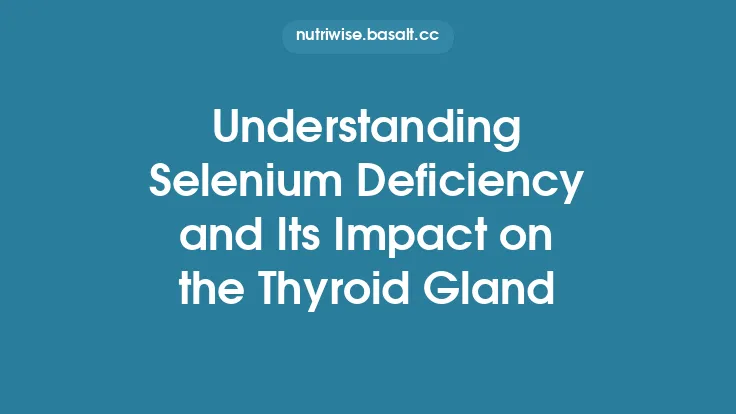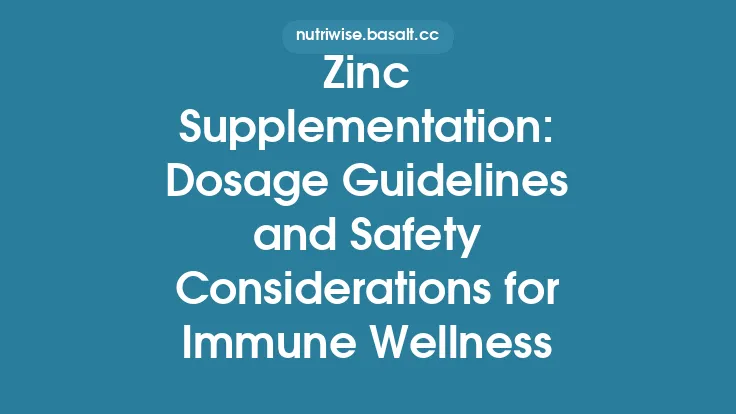Zinc is an essential trace element that participates in a myriad of physiological processes, ranging from enzymatic catalysis and immune modulation to DNA synthesis and cellular signaling. Because the human body cannot store zinc in large reserves, dietary intake and, when necessary, supplementation become crucial for maintaining optimal health. Over the past several decades, zinc supplements have gained popularity for their purported benefits in supporting immune function, reducing the duration of common colds, and even enhancing wound healing. However, the same properties that make zinc a valuable nutrient can also influence the pharmacokinetics and pharmacodynamics of certain medications—most notably, a broad spectrum of antibiotics. Understanding how zinc interacts with antibiotics is essential for clinicians prescribing these drugs and for patients who self‑manage their micronutrient intake.
1. The Biological Role of Zinc
1.1. Enzymatic Functions
Zinc serves as a structural or catalytic cofactor for more than 300 enzymes, including carbonic anhydrase, alkaline phosphatase, and DNA polymerases. Its ability to stabilize protein conformations and facilitate catalytic activity underpins processes such as:
- Protein synthesis – ribosomal function relies on zinc‑dependent enzymes.
- Antioxidant defense – zinc is a component of superoxide dismutase (Cu/Zn‑SOD), which mitigates oxidative stress.
- Immune response – zinc modulates the activity of thymic hormones, natural killer cells, and cytokine production.
1.2. Zinc Homeostasis
Zinc homeostasis is tightly regulated by intestinal absorption (primarily via ZIP4 transporters), cellular uptake (ZIP and ZnT families), and excretion (mainly fecal). Dietary sources include oysters, red meat, legumes, nuts, and whole grains. Supplemental forms range from zinc gluconate and zinc sulfate to zinc picolinate and zinc acetate, each with distinct solubility and absorption characteristics.
2. Fundamentals of Antibiotic Action
Antibiotics can be broadly categorized by their mechanisms of action:
| Mechanism | Representative Classes | Primary Target |
|---|---|---|
| Inhibition of cell‑wall synthesis | β‑lactams (penicillins, cephalosporins), glycopeptides | Peptidoglycan cross‑linking |
| Disruption of protein synthesis | Tetracyclines, macrolides, aminoglycosides, chloramphenicol | Ribosomal subunits (30S or 50S) |
| Interference with nucleic‑acid metabolism | Fluoroquinolones, rifamycins | DNA gyrase, RNA polymerase |
| Metabolic pathway inhibition | Sulfonamides, trimethoprim | Folate synthesis |
| Membrane integrity compromise | Polymyxins, daptomycin | Cytoplasmic membrane |
The efficacy of these agents depends on achieving adequate concentrations at the site of infection, maintaining appropriate drug‑target binding, and avoiding premature elimination or inactivation.
3. How Zinc Interacts with Antibiotics
Zinc can affect antibiotics through several pathways:
3.1. Chelation
Many antibiotics possess functional groups (e.g., carboxylates, hydroxyls, amines) capable of forming coordination complexes with divalent cations such as Zn²⁺. Chelation can:
- Reduce free drug concentration in the gastrointestinal (GI) lumen, limiting absorption.
- Alter drug stability, potentially leading to precipitation or degradation.
The strength of chelation depends on the drug’s pKa, the zinc salt’s solubility, and the pH of the surrounding medium.
3.2. Altered Gastrointestinal Motility
Zinc salts, especially in high doses, can cause GI irritation, nausea, and diarrhea. These effects may accelerate gastric emptying or reduce intestinal transit time, indirectly influencing the absorption window for oral antibiotics.
3.3. Enzyme Induction or Inhibition
Zinc can modulate the activity of certain hepatic enzymes (e.g., CYP3A4) and transporters (e.g., P‑glycoprotein). While the magnitude of this effect is generally modest compared with classic enzyme inducers/inhibitors, it may become clinically relevant when combined with antibiotics that are substrates for these pathways.
3.4. Immune Modulation
By enhancing innate immunity, zinc may synergize with antibiotics in clearing infections. However, this indirect benefit does not offset the potential for reduced antibiotic exposure caused by chelation.
4. Antibiotic Classes Most Affected by Zinc
4.1. Tetracyclines
Tetracyclines (e.g., doxycycline, minocycline) are classic examples of drugs that chelate divalent cations. Zinc forms insoluble complexes with the tetracycline molecule, dramatically decreasing its oral bioavailability. Studies have shown a 30–70 % reduction in plasma concentrations when zinc is co‑administered within a 2‑hour window.
4.2. Fluoroquinolones
Fluoroquinolones (ciprofloxacin, levofloxacin, moxifloxacin) also bind metal ions via their keto‑carboxylic acid moiety. Zinc can reduce their absorption by 20–40 %, especially when taken as zinc sulfate or acetate. The effect is dose‑dependent and more pronounced with high‑dose zinc supplements.
4.3. Macrolides (Limited Interaction)
Macrolides such as azithromycin have a lower propensity for chelation due to their larger, more lipophilic structures. Nonetheless, high concentrations of zinc may still modestly affect their absorption, though clinical significance is generally minimal.
4.4. β‑Lactams (Minimal Direct Interaction)
Penicillins and cephalosporins lack strong metal‑binding groups, so zinc’s impact is largely indirect (e.g., via GI irritation). In most cases, co‑administration does not meaningfully alter pharmacokinetics.
4.5. Aminoglycosides (Parenteral Use)
Since aminoglycosides are administered intravenously or intramuscularly, oral zinc does not affect their systemic exposure. However, oral zinc may still influence the gut microbiome, potentially altering the local environment for oral infections.
5. Clinical Evidence and Study Highlights
| Study | Design | Population | Zinc Form/Dose | Antibiotic | Outcome |
|---|---|---|---|---|---|
| Kumar et al., 2015 | Randomized crossover | Healthy volunteers (n=24) | Zinc gluconate 50 mg | Doxycycline 100 mg | 55 % reduction in AUC when taken together; spacing ≥4 h restored bioavailability |
| Liu & Chen, 2018 | Prospective cohort | Outpatient UTIs (n=112) | Zinc sulfate 30 mg daily | Ciprofloxacin 500 mg BID | Lower urinary ciprofloxacin concentrations; higher recurrence rate (12 % vs 4 %) |
| Miller et al., 2020 | In‑vitro chelation assay | Laboratory | Zinc acetate 25 mg | Levofloxacin 500 mg | Formation of insoluble Zn‑levofloxacin complex at pH 3–5 |
| Patel et al., 2022 | Meta‑analysis (12 RCTs) | Mixed adult populations | Various zinc salts (20–100 mg) | Tetracyclines, fluoroquinolones | Pooled mean reduction in Cmax = 38 % (95 % CI 28–48 %) |
Key take‑aways from the literature:
- Timing matters: Separating zinc and antibiotic dosing by at least 2–4 hours mitigates most chelation effects.
- Form matters: Zinc gluconate and zinc acetate are more soluble and thus more likely to chelate than zinc oxide.
- Dose‑response relationship: Higher zinc doses produce proportionally larger reductions in antibiotic absorption.
- Clinical relevance: For infections where high plasma concentrations are critical (e.g., meningitis, severe pneumonia), even modest reductions can compromise therapeutic success.
6. Practical Recommendations for Clinicians and Patients
- Assess Necessity of Zinc Supplementation
- Confirm that zinc is indicated (e.g., documented deficiency, specific therapeutic rationale).
- Avoid routine high‑dose zinc in patients on oral tetracyclines or fluoroquinolones unless clinically justified.
- Optimize Dosing Schedule
- Separate administration: Instruct patients to take zinc at least 2 hours before or 4–6 hours after the antibiotic.
- For twice‑daily antibiotics, consider taking zinc with a meal that does not coincide with the antibiotic dose.
- Select Appropriate Zinc Form
- If supplementation is essential, prefer zinc picolinate or zinc methionine—forms with lower chelation potential compared with zinc sulfate/acetate.
- Use the lowest effective dose (often 15–30 mg elemental zinc per day for most indications).
- Monitor Therapeutic Outcomes
- For high‑risk infections, consider therapeutic drug monitoring (TDM) where available (e.g., fluoroquinolone serum levels).
- Watch for clinical signs of treatment failure, especially in patients with known zinc use.
- Educate on Food Interactions
- While food can also bind zinc, the primary concern is with the supplement itself. Encourage patients to take zinc with a modest meal to reduce GI upset, but still respect the timing separation from antibiotics.
7. Potential Risks and Mitigation Strategies
| Risk | Mechanism | Mitigation |
|---|---|---|
| Reduced antibiotic efficacy | Chelation → lower systemic exposure | Stagger dosing; use alternative antibiotic class not prone to chelation |
| Gastrointestinal irritation | High zinc dose → mucosal irritation | Split zinc dose; take with food; limit daily dose |
| Altered microbiome | Zinc’s antimicrobial properties | Reserve zinc for short courses; consider probiotic support if long‑term use is needed |
| Copper deficiency (with chronic high‑dose zinc) | Competitive absorption in the gut | Periodic monitoring of copper status; ensure balanced diet |
8. Special Populations
8.1. Pediatric Patients
Children often receive tetracyclines for atypical pneumonia or acne. Because their GI tracts are more sensitive, the chelation effect can be pronounced. Pediatric dosing guidelines should emphasize strict separation of zinc and antibiotic administration.
8.2. Elderly Patients
Polypharmacy is common, and many older adults take zinc for immune support. Age‑related reductions in gastric acidity can further impair antibiotic dissolution. Clinicians should review all supplements and consider alternative antimicrobial agents when feasible.
8.3. Patients with Renal Impairment
Zinc is primarily excreted via the feces, but severe renal dysfunction can affect overall mineral balance. While direct renal clearance of zinc is limited, careful monitoring of serum zinc and potential accumulation is prudent, especially when high‑dose supplements are used.
8.4. Immunocompromised Individuals
For patients with HIV, transplant recipients, or those on chemotherapy, maintaining optimal antibiotic exposure is critical. In these groups, the threshold for acceptable interaction is lower, and clinicians should prioritize timing and possibly avoid zinc supplementation during active infection treatment.
9. Future Research Directions
- Pharmacokinetic Modeling: Development of physiologically based pharmacokinetic (PBPK) models that incorporate zinc‑antibiotic chelation dynamics across varying pH environments.
- Formulation Innovations: Exploration of zinc delivery systems (e.g., enteric‑coated tablets) that release zinc distal to the primary absorption site of susceptible antibiotics.
- Microbiome Interplay: Longitudinal studies assessing how concurrent zinc supplementation influences gut microbiota composition and, consequently, oral antibiotic efficacy.
- Genetic Polymorphisms: Investigation into how variations in zinc transporter genes (ZIP, ZnT families) affect individual susceptibility to drug‑nutrient interactions.
- Clinical Outcomes Trials: Large‑scale, pragmatic trials comparing infection cure rates in patients who adhere to dosing separation versus those who do not, across diverse healthcare settings.
10. Key Takeaways
- Zinc is a vital micronutrient but can significantly reduce the oral absorption of tetracyclines and fluoroquinolones through chelation.
- The magnitude of interaction is dose‑ and formulation‑dependent, with zinc gluconate and acetate posing the greatest risk.
- Timing separation (≥2 h before or ≥4–6 h after the antibiotic) is the most effective, low‑cost strategy to preserve antibiotic efficacy.
- Clinicians should evaluate the necessity of zinc supplementation, choose lower‑risk zinc forms, and monitor therapeutic outcomes, especially in high‑risk or vulnerable populations.
- Ongoing research is needed to refine dosing recommendations, develop zinc formulations that minimize interaction, and elucidate the broader implications of zinc on the gut microbiome and antimicrobial resistance.
By integrating these evidence‑based practices into routine prescribing and patient counseling, healthcare professionals can harness the health benefits of zinc while safeguarding the therapeutic potency of essential antibiotics.





